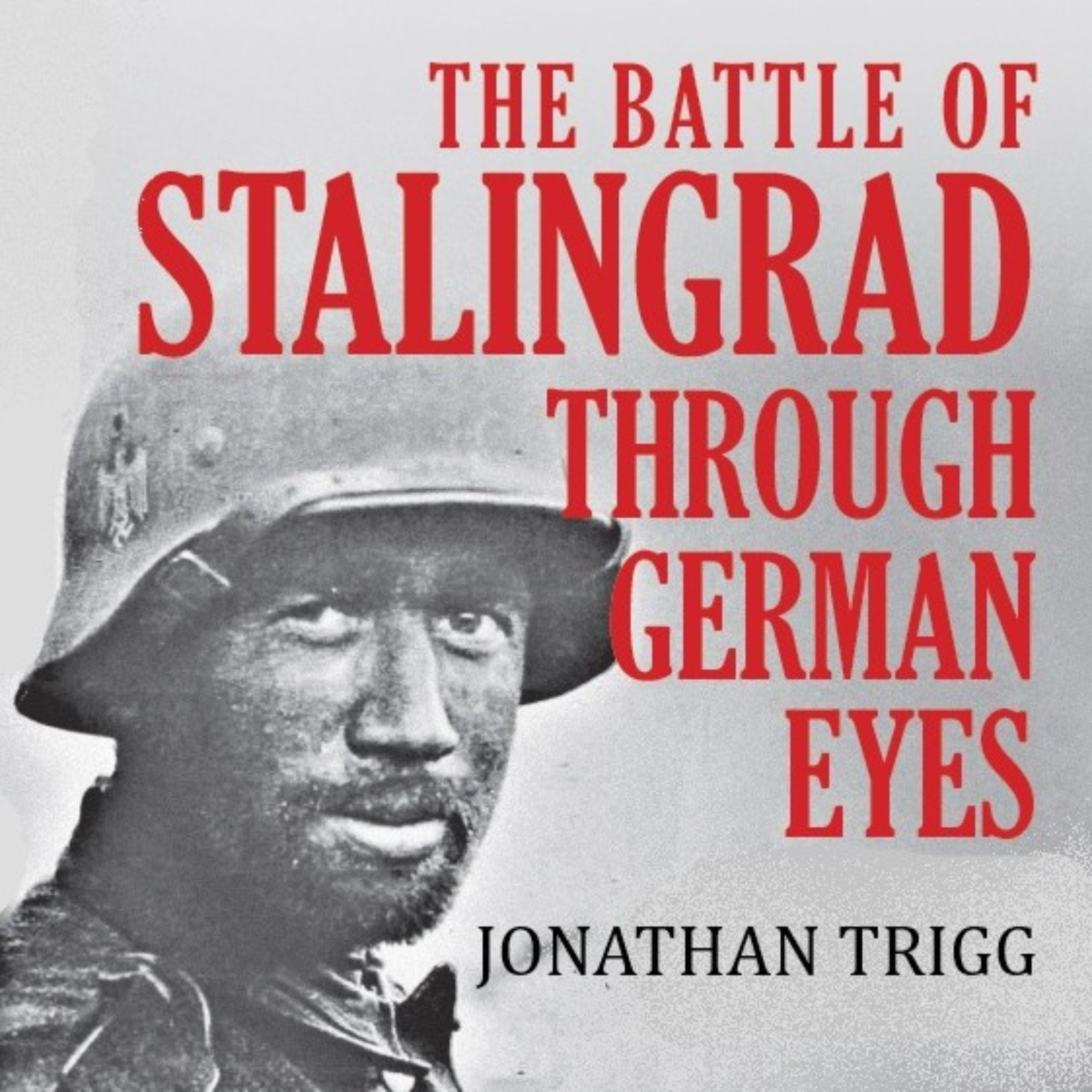72 More Seabees and family stories WWII

Scary coincidences with Kamikazes!
A short episode to follow up feedback I’ve had on the previous Seabees episode.
Full show notes at:
https://www.fightingthroughpodcast.co.uk/72_More_Seabees
Reviews on main website
https://www.fightingthroughpodcast.co.uk/reviews/new/
Apple reviews - https://itunes.apple.com/gb/podcast/ww2-fighting-through-from-dunkirk-to-hamburg-war-diary/id624581457?mt=2
Follow me on Twitter - https://twitter.com/PaulCheall
Follow me on Facebook - https://www.facebook.com/FightingThroughPodcast
YouTube channel - Loads of my own videos - Dunkirk Mole, Gold Beach, much more. https://www.youtube.com/user/paulcheall/videos
Interested in Bill Cheall's book? Link here for more information.
Fighting Through from Dunkirk to Hamburg, hardback, paperback and Kindle etc.
A short unplanned episode to cover some follow up I’ve had on the SeaBees episode.
John Serra 79th Construction Battn told the story of the Kamikaze attack
Chipe Henneman's artifacts
French Poster ww2
French Resistance ID
Isabel Pell WW2
Horrie the Dog
Philip Quinn's Uncle Norm - Norman Littlechild with Horrie
Norman Littlechild front 2R
Queen Mary
Fighting Through Podcast Episode 72 More Seabees
More great unpublished history! WWII
Welcome
Hello again and another warm WW2 welcome to the Fighting Through second world war podcast.
I’m Paul Cheall, and you know the rest! This is just a short unplanned episode to cover some follow up I’ve had on the SeaBees episode. I decided rather than keeping everybody waiting
for the next episode I thought I’d share it with you now whilst the last episode might still be fresh in your minds.
This episode
Back story
John Serra:
After that Japanese sub incident, we continued on and came in sight of the islands of Okinawa where we saw a huge smokescreen.
We couldn't see the shoreline or ships because it was all milky white. As we approached, some of the Jap planes were flying overhead. Turned out they were Kamikaze planes, suicide planes that could crash down and land on ships and hope to destroy them by setting them on fire.
We were there for three or four days before we unloaded our ship. In the meantime, the Kamikazes were coming at us for what seemed like 24 hours a day. We were completely surrounded by the milky smokescreen. On one particular day -- I think it was a Sunday – a Kamikaze hit an LST right close to mine that was starting to unload. Luckily for us, it missed our ship and we continued to unload. This all impressed us because some of our equipment was slow moving on land, and we couldn't unload until they were further down the road. The roads were very narrow in Okinawa, and the unloading areas were like small pads, none of it was really made for handling all the equipment that we had. The weather was not the greatest.
I had to chuckle at the end there – nearly got their heads blown off by a Kamikaze and still had time to think about the weather.
Anyway off the back of that - Straight in to a Family story
Lee Patrick from Atlanta, Georgia has written in
Thank you for the Battalion Artist Episode outlining the SeaBees. I am a newcomer to your podcast and have been enjoying it for the past two weeks. I tried to listen to the series in order but couldn’t resist skipping ahead to the Fighting SeaBees.
Because my Grandfather Marion Patrick was Chief Warrant Officer in the SeaBees, the 79th, same as John Serra. Unfortunately, my Grandfather passed away when I was an infant and I missed out on any first hand information. However, my grandmother relayed a few stories about his time in the Navy.
According to my Grandmother the only time he was truly afraid was on Okinawa. A kamikaze hit the transport next to his as he was unloading equipment. Hearing John Serra’s account of this same incident sent chills down my spine. {I wonder if they were on the same boat?}
Second, on Okinawa they were setting up buildings of some sort at a particular location. This construction elicited protest among the locals. Lacking interpreters and being on a timeline they continued their work ignoring the ‘yammering language’ from the natives. Later when the monsoon season arrived, they found all the buildings on that site were taken away by the winds. Obviously, the locals were trying to warn them of the danger.
My grandmother was able to reside in Oakland California while my grandfather was there during training. She rented a small residence with three other newly married women in the same situation. Their landlord was a little old widower in his eighties. All four of the young brides became pregnant with a month of each other. My grandmother said the neighborhood joked about the situation saying things like: “We didn’t know that little old man still had it in him.” And “That old guy sure took advantage of his situation.”
Upon his return home my grandfather told of the literal mountains of sugar left in supply depos on Okinawa. This upset my Grandmother immensely since sugar was in such short supply in the States.
During the war canned Salmon was a rare commodity their hometown of Atlanta. My Grandmother hoarded it thinking it would be a nice surprise for my grandfather upon his return. Unfortunately, canned salmon was akin to canned Spam for the men of the Pacific. He was not thrilled to see the cans of salmon waiting on him at home.
Somehow my Grandfather was able to make trips to China while waiting on his transport home. He brought back some silk clothes with various other small souvenirs. I always wondered what other memories he would have shared if given more time.
Thank you for putting together this podcast. Generations will have the opportunity to hear these recounts where past historians could only dream of having such information.
Thanks again,
Lee Patrick
Atlanta, Georgia
P.S.
My Great uncle, Perry Patrick, is said to have trained Chinese fighter pilots. We think the base was located in Waycross, Georgia.
If you ever hear of an Army Air Corps base training Chinese pilots, I would love to hear about it but my own internet searches have yielded very little.
P.P.S. The German Boy Soldier Memoir absolutely broke my heart.
+
I think anyone hearing Lee telling how he has just started will feel a tinge of envy that he’s got all these episodes to devour. I’m wondering if there’s anyone who’s up to date with the show who’s been listening from the start in 2013? How has it been for them? Because I have no idea how many have stayed the course.
Buy me a coffee 1
Janice Blake and David Money kindly bought me several Calvados through the BMAC feature on the home page. David many thanks and as I’ve previously mentioned on the show, these proceeds will go to the Salvation Army in support of their many honest exploits on various fronts.
Thank you guys, both of you.
And hot off the press, staunch supporter AND CONTRIBUTOR TO THE SHOW, Sidney
Topf has also just made a very generous Calvadosic contribution to the show – many thanks Sidney. I will remind you that I’m currently donating these donations to the Salvation army.
What is Calvados?
Apple brandy from the Normandy region of France.
Feedback 1 Paul Gibson UK
Hi Paul,
Just discovered your podcast, as I am interested in WW2 Bomber Command, and the courageous stories took place,
Great work ! I listen to them on my morning work, and become engrossed. Thank you for your great research and efforts.
Paul I’m actually looking at another self published Bomber Command memoir at the moment which sounds brilliant so hope to be covering that in a future episode. Trouble is I’ve got several interviews and stories on my hands at the moment so it’s about prioritising stuff really. Before long I’m going to give a status report on all these projects.
Family stories 2 Chip Henneman
Hi Paul,
I was five years old when I became interested in WW II, that is many years ago now. That interest has turned into a passion where I started The World War II Era Preservation Society. I have close to five thousand items in the collection from all over the world.
My Godmother Mlle. Jeanne Perrachon was a member of the French Resistance in the Lyon area and she’s shared with me a few of her stories, along with giving me items that she had saved from the war, including the identification that her cell of the resistance used – a specially produced 20 franc note. If you look carefully you’ll see a picture of hitler in the bottom left corner and he has a fisherman’s rope around his neck.
Mademoiselle was part of Pat O’Leary Line, one of the escape routes for Allied soldiers and airmen with over 5000 soldiers and airmen using this route. Mademoiselle shared with me that she would take messages to different members of the organization, gather information on German and Vichy French units in the area, and helped to escort Allied soldiers and airmen to different safe houses throughout the area. She never participated in any direct sabotage of the German or Vichy French infrastructure, al least that she shared with me. One of the main reasons that she didn’t share a lot with me was due to her fiancé. She never told me his name but did share that he was betrayed by someone, arrested by the Vichy police, and turned over to the Gestapo in 1944. All that she knew was that he was sent to a concentration camp in Germany in August of 1944 and executed in December of 1944. She never found out what happened to his remains. She did share, that the person who betrayed him and several others was killed by members of the resistance after the liberation of Lyon in 1944.
There’s a poster printed up by De Gaulle and posted all over France as a morale booster, telling the French people they might have lost a battle but not the entire war. She told me that the Germans were ripping down all these posters and destroying them but she took this one off a wall, rolled it up and hid it under her nurse’s cape. She had seen several Frenchman beaten by Germans who were found with this poster.
Another photo is of Isabel Pell. She was an American socialite whose family had a house in France. Ms. Pell worked with the resistance and Mademoiselle told me that she had met Ms. Pell a few times during the war and that they remained in contact after the war.
Chip thanks
Family stories 3 – Talking about dogs, Phillip Quinn
Wonders if I’ve covered the story of 'Horrie the War Dog'? He was a wonderful pup 'attached to' my Uncle Norm's crew in the Middle East.
He was a small Egyptian terrier taken as mascot by the Australian 2/1st MGB. Because of his good hearing, he would warn the diggers of the approaching Stukas and other planes. My Uncle Norm was a machine gunner, and had a pic of Horrie in his caravan at our house in the 70.
I wish I could go back and talk to Uncle Norm about Horrie and all the other things he did in WWII. Greece, Middle East and Balakpapan.
There’s a few pics in the show notes.
Family stories 4 – Frank Papalia
Captain Papalia. Captain Papalia. Captain James Papalia?!
This one’s for you James. You’re a top listener and your Dad Frank sent me this story absolutely ages ago.
I’ve mentioned Frank Papalia and son James Papalia before but sometimes odd bits of feedback slip through the cracks and I found this in a recent sweep up.
Framk said: My Grandfather, James great GF, was in Korea, my other at Iwo Jima, in Japan, and my father in law is a decorated silver star from the Vietnam Conflict, so we have plenty of first hand history in our families four walls!
In 2002, I had the good fortune of meeting US WW2 veterans Lester Tenney and Frank Bigelow. I was working for a United States Congressman, and those two gentlemen were suing the Japanese government for their treatment during the Bataan Death March. Congressman Hunter shut down the office and called the whole staff in and let us listen; it was fascinating!
Lester Tenney had written a book and was telling stories about the beatings, beheadings and murders, as well as the starvation diet they were fed. Talked about how they had to hold guys up who were failing health and if they didn't, they would be killed instantly. This was especially difficult when they themselves were suffering. He cried, pride and bad memories, but was proud to have withstood it, and equally sad for the men he saw die, he felt blame and shame for surviving. His story was amazing.
But it was Frank Bigelow, who was probably in his late 70s early 80s and still a very large man, who told such an interesting story. He mentioned that he had to have his leg amputated by his own people. A boulder fell on him and it became infected and they tried to splint it and fix it but the gangrene began to set in. So six of his buddies held him down and amputated it, with whatever tools they could find. He said and I still remember, how he couldn't remember how he dealt with the pain, but that he had no choice, and he just did it. He told another story I'll never forget, about being on the coal crushing machine after this event, and he was shivering from infection.
A japanese soldier came up from behind him and tried to strangle him out. Mr. Bigelow showed us what happened next, he said with every ounce of energy, he threw him off him and punched him in the nose. When he showed us the punch, you noticed how big his hand was, and the sound of hand punching his other hand still was loud and packed a punch. He said he might have been dead and laid him on the coal crusher. When he was crushed, he called for help "to save him". When the japanese officials arrived he said he struggled to stop the machine but called for help when the officer fell. They gave him a can of pineapple and let him have a week's rest. He said "If i win my lawsuit ill give them back the money for the pineapple!"
It was an hour of these kinds of stories, but well worth it. When I went home to visit my parents, I began asking the grandparents about their war stories, and as I mentioned, this began my interest!
James, my son, learned of it, and learned from my maternal grandfather. He can't get enough, and this episode just made him so happy.
War stuff 1
Bully Beef, Beans and chips
Finally, what is Bully Beef, Dawane Harris asks in a random comment in the middle of a conversation! Well, that’s Bully Beef, star of so many memoirs and memories from my Dad to the late Wilf Shaw – especially Wilf –
With chips
Hash
Beans – best if served from the back of a burnt out ambulance found in the Dunkirk France area about 1940. But if not, just go to your local store and ask for a can of Heinz Baked beans – not green beans, butter beans, broad beans, split beans or even spilt beans.
But orange coloured beans, served piping hot in tomato sauce. I think Heinz use Haricot beans, sometimes also known as navy beans. If you’ve never heard of them, try a delicatessen. In England they’re all over the place so I don’t really know why I’m saying all this. We can get Heinz, HP, Branston and a plethora of supermarket own brands. But I’m guessing in some parts of the world, like Idaho, Australia and Hong Kong, they’re just museum curiosities on the “what we used to eat” shelf.
If you’re going to eat it cold, best kept in the fridge and then thinly slice before serving. But take care when opening the tin because they have a little key that you wind round the tin to wind open the seal and the tins are deadly sharp, watch your fingers and don’t do what the very nearly late listener Dawane Harris nearly chopped off with his chain saw – I never did hear the story!
Replay wilf?
PS
Bully beef - wiki
(also known as corned beef in the United Kingdom and Ireland) refers to a variety of meat made from finely minced corned beef in a small amount of gelatin. The name "bully beef" comes from the French bouilli, meaning "boiled".
Bully beef and hardtack biscuits were the main field rations of the British Army from the Boer War to World War II.[1][2] It is commonly served sliced in a corned beef sandwich. Potato-based dishes, such as "Hash and hotch-potch," in which the potatoes and beef are stewed together, and "Corned Beef Hash", where pre-boiled potatoes and corned beef are mixed with Worcestershire sauce then fried, are also made.
I’ve got fond personal memories of corned beef hash in the boy scouts when ah were a lad.
Some places where British troops had a heavy presence in the 20th century (especially during World War II), such as Malta, have adopted bully beef as part of their national cuisine.
As recent as 2009, the British Defence Equipment and Support announced that they would be phasing out bully beef from ration packs as part of the introduction of the new Multi-Climate Ration Packs.
So – if you have a bully beef story - please do share it! If you prefer to remain anonymous as to admitting that you sometimes still eat the stuff, just say!
This is going to be like that Paulo Bonini tales when he got back to me about five years after I’d asked who the solitary listener in Cambodia was – and bejabbers Paulo wrote in, bless him. Another five years from now we’re going to be listening to someone’s great grandma’s bully beef recipe and how she kept a squad of 18 Germans at bay with it in WW2. Oh dear!
But sticking with Paulo for a minute…
Other places where I only have one listener – just a few … are …
Christmas Island
Maldives
And oh go on then I’ll break the rule – two people freezing their jacksies off – whatever that means – in …. Antarctica – now that could be interesting. This is like one of those postcode lotteries except there’s no prize apart from hearing your name in glorious esteem on the FTP.
So drop me a line and tell me your story – Maldives, Christmas Island (ooo December Christmas special I hear you think) and Antarctica!
I/m Paul …










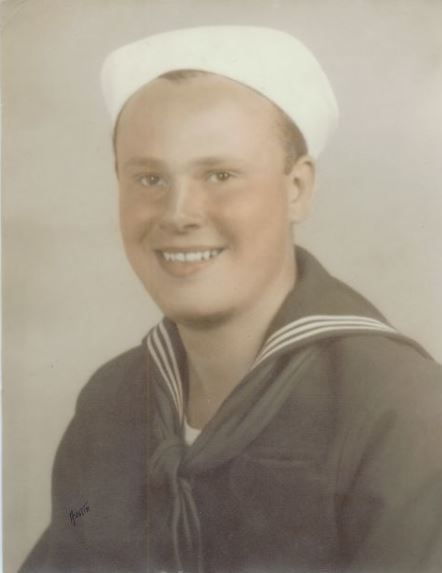
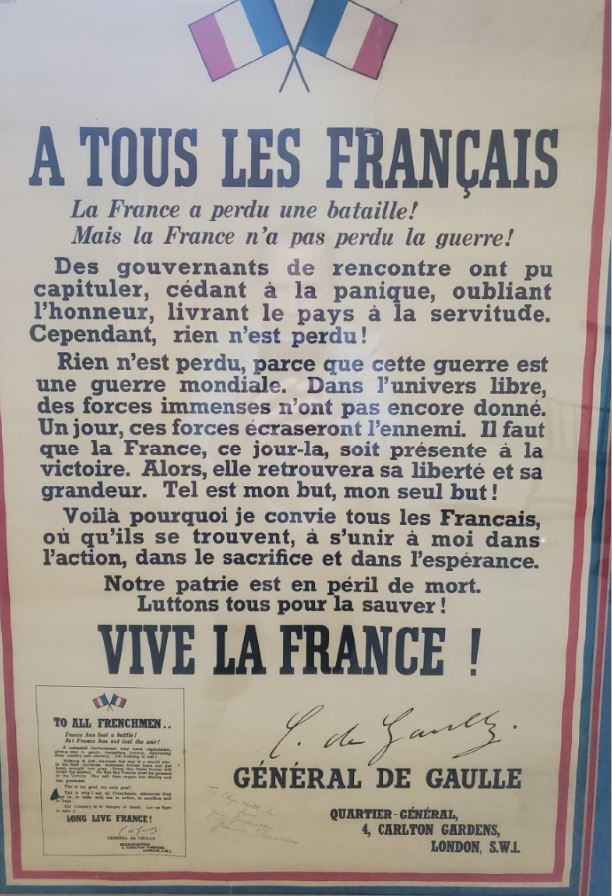
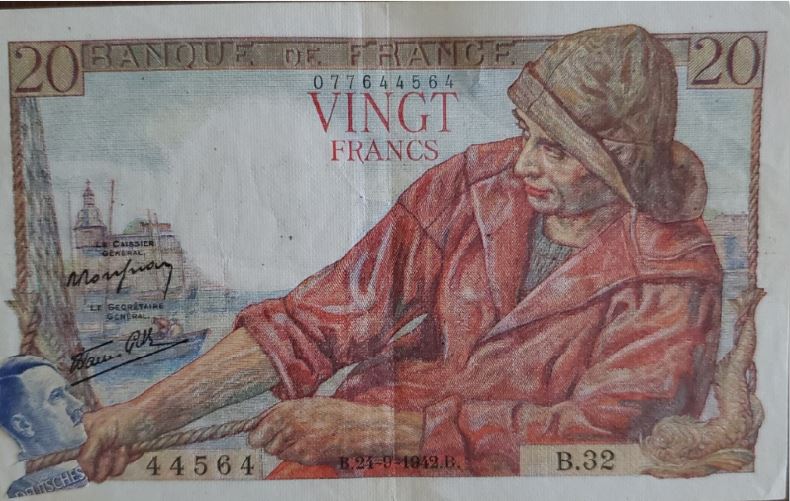
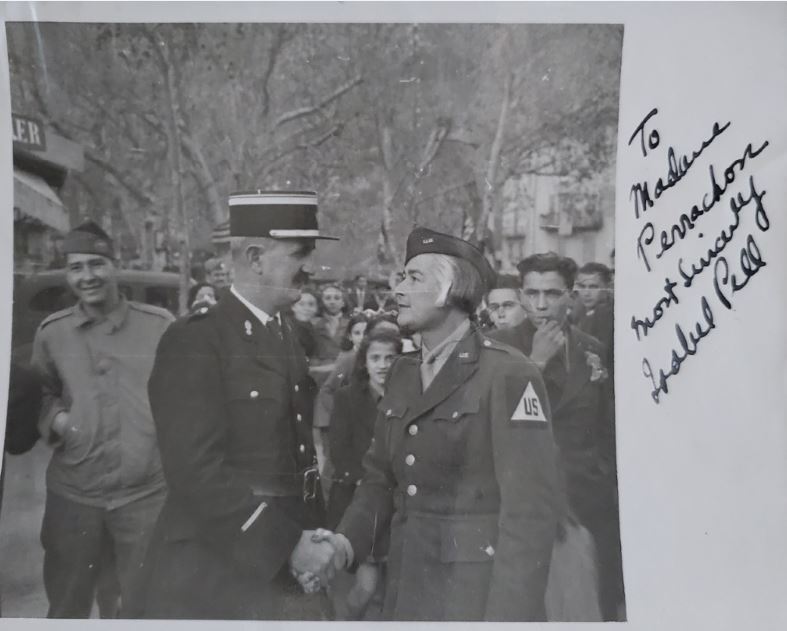
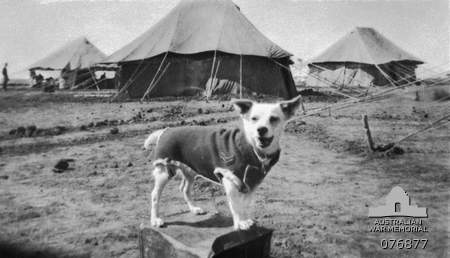
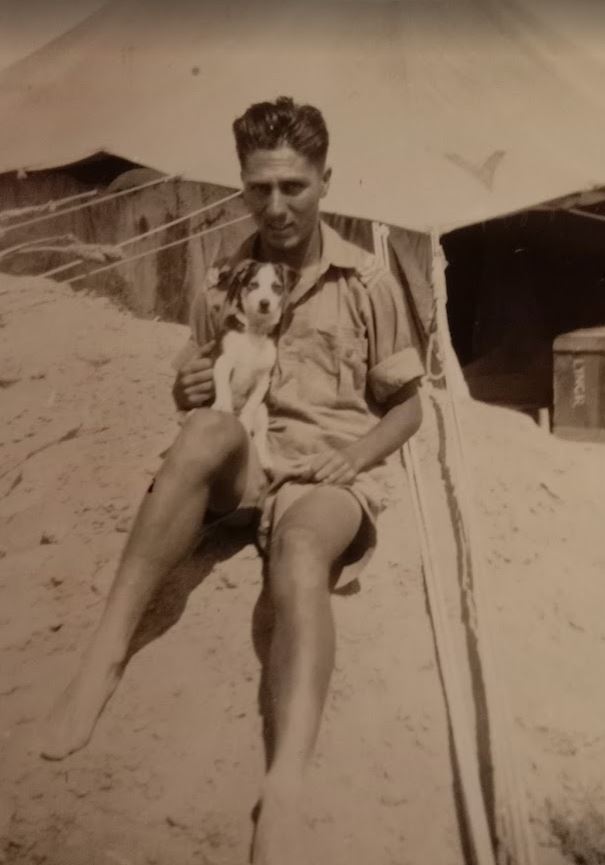
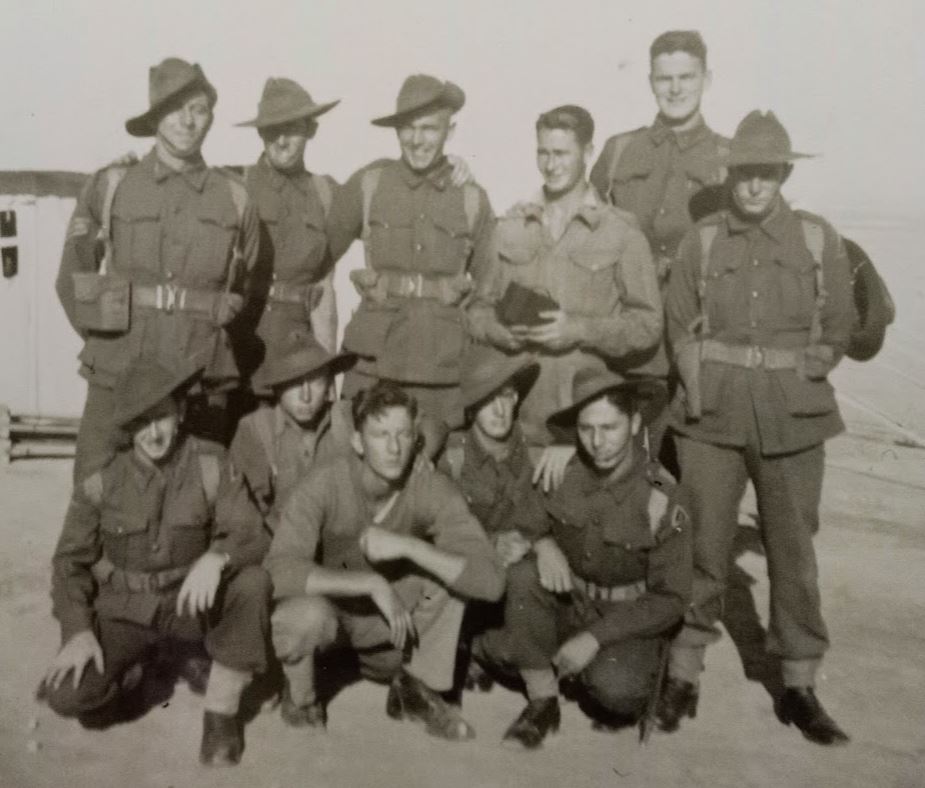
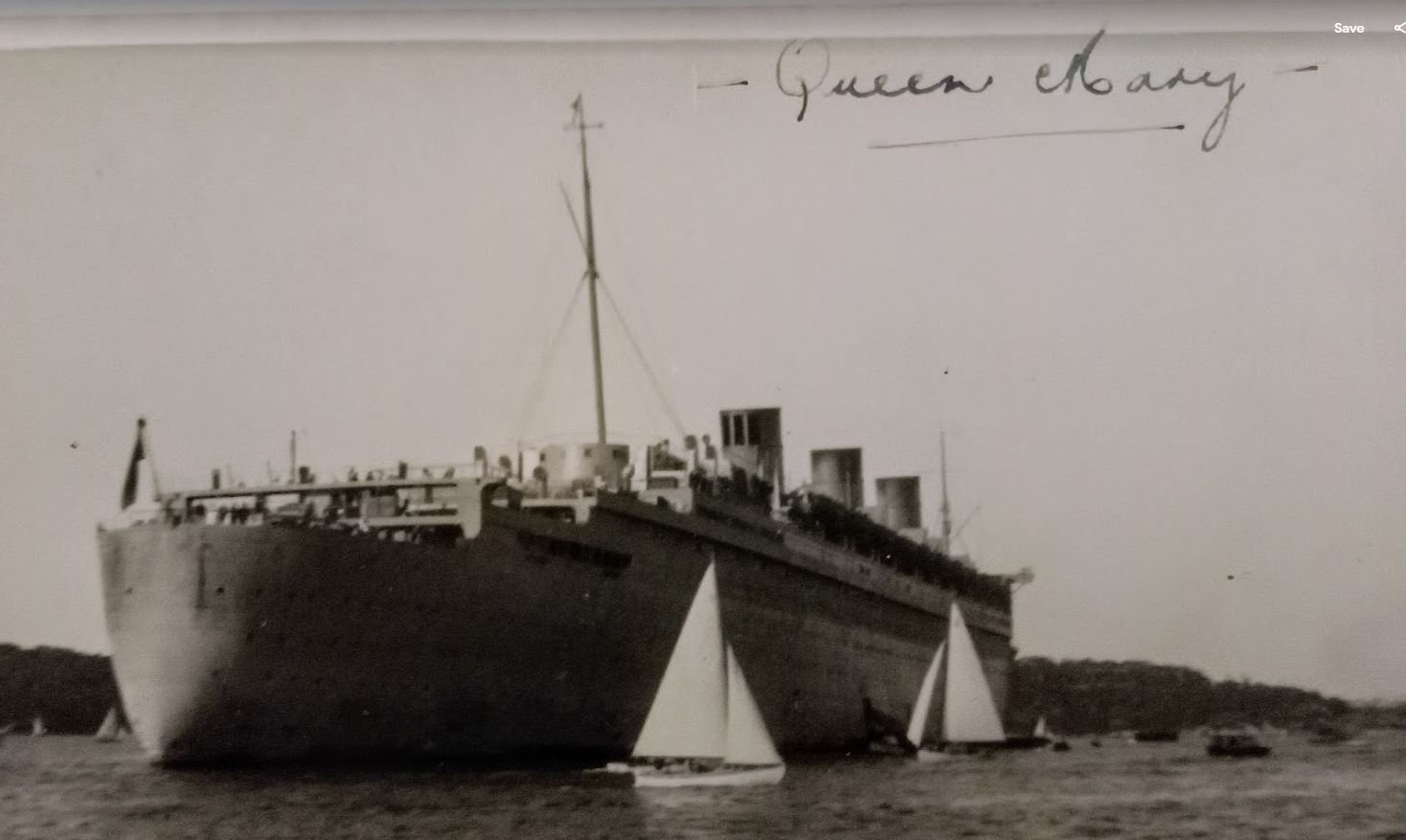



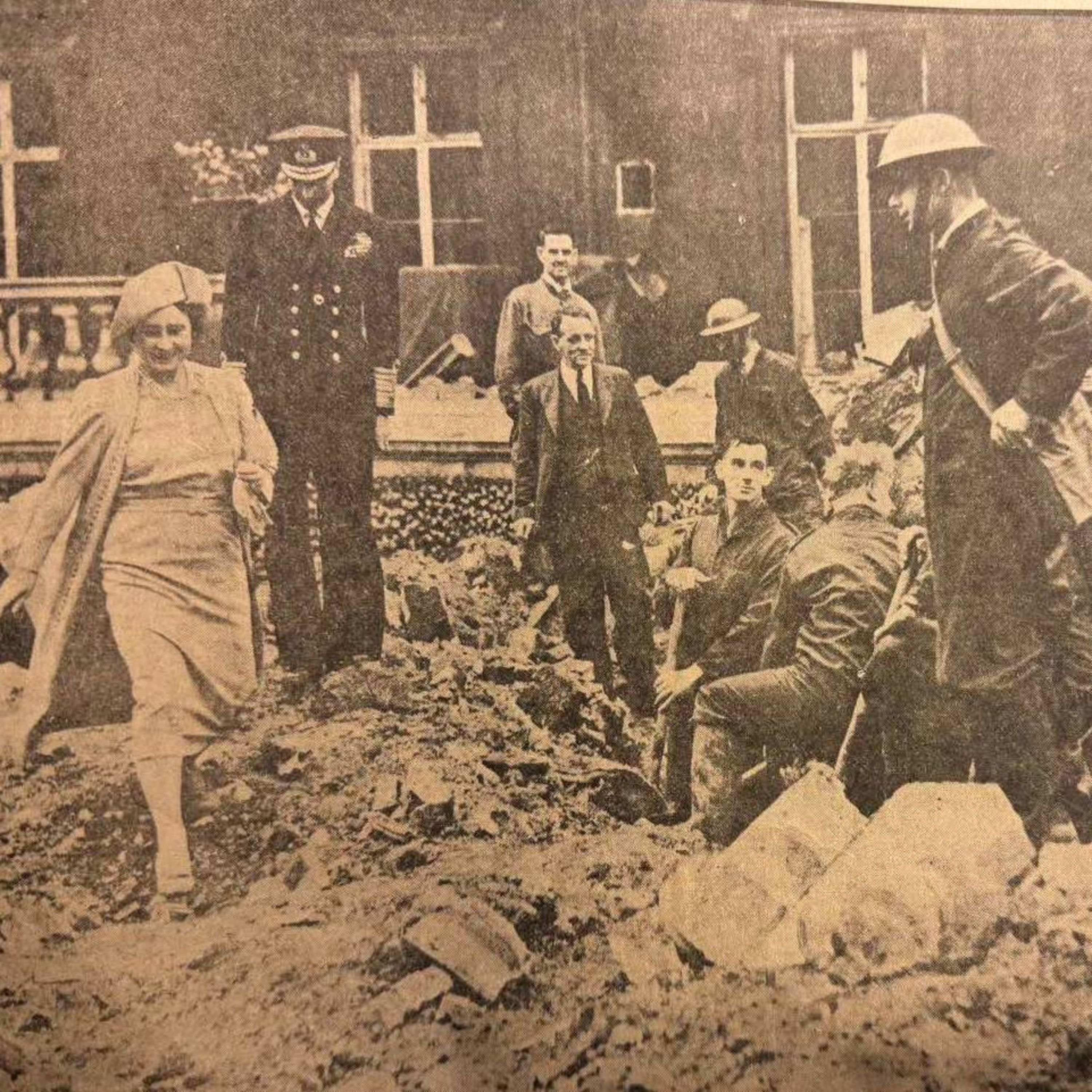
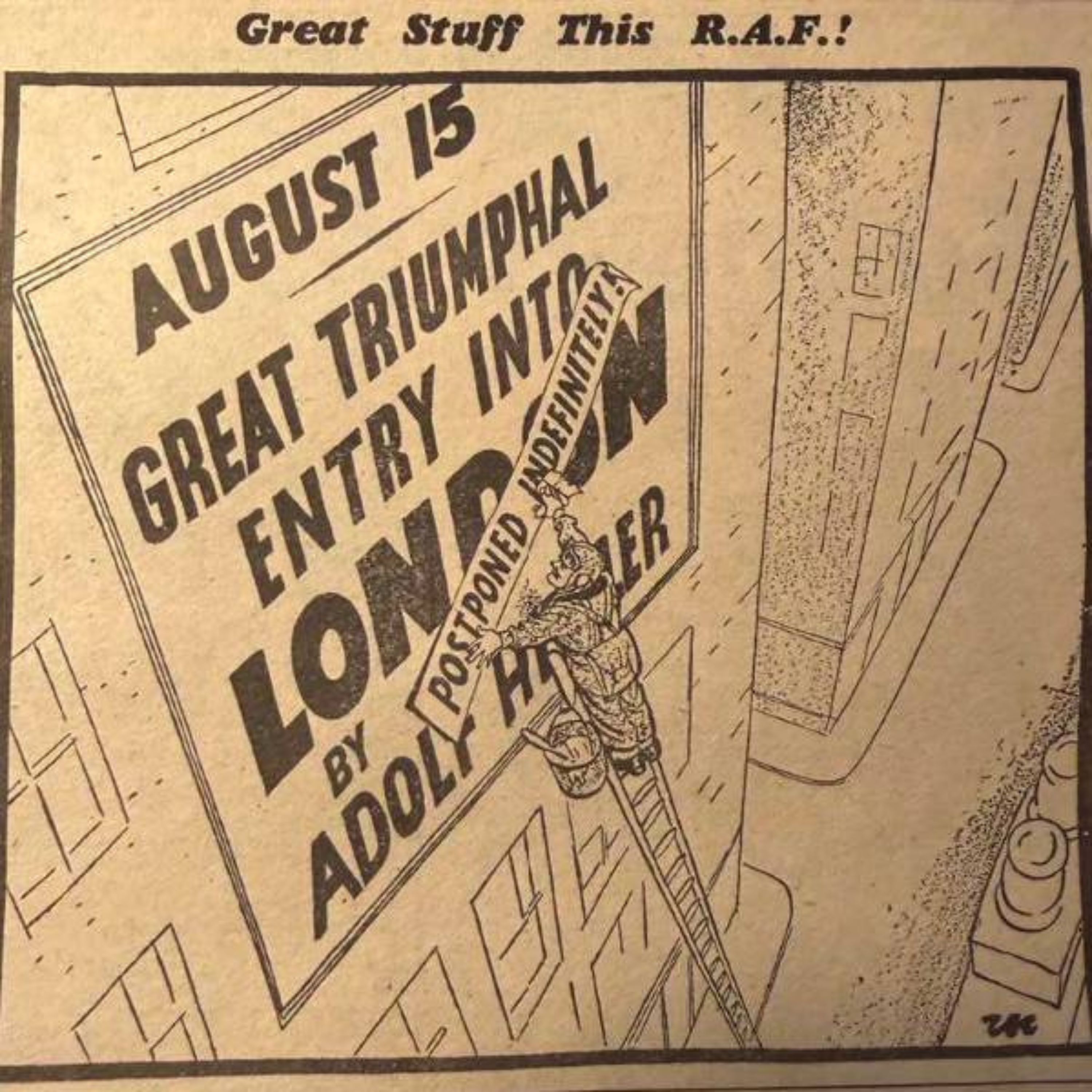
![123 Stalingrad [Part THREE] Through German Eyes WW2 BY Jonathan Trigg 123 Stalingrad [Part THREE] Through German Eyes WW2 BY Jonathan Trigg](https://static.libsyn.com/p/assets/e/e/e/e/eeeee3c32d54655816c3140a3186d450/sTALINGRAD_awjpg-20251024-buktcl8q9q.jpg)
![122 Stalingrad [Part TWO] Through German Eyes WWII 122 Stalingrad [Part TWO] Through German Eyes WWII](https://static.libsyn.com/p/assets/b/6/c/f/b6cffc6d7bfe6b0516c3140a3186d450/sTALINGRAD_awjpg-20251021-prna8wsjmd.jpg)
